-
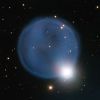 +30 +1
+30 +1A Stellar Bubble: When an ageing star shed its outer layers, this blue bubble was left behind.
This eye-catching image of the planetary nebula Abell 33 was taken by astronomers using the European Southern Observatory’s Very Large Telescope in Chile. Created when an ageing star blew off its outer layers, this beautiful blue bubble is, by chance, aligned with a foreground star. This cosmic gem is unusually symmetric, appearing to be almost perfectly circular on the sky.
-
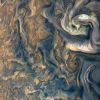 +14 +1
+14 +1Space Photos of the Week: Juno Snatches a Shot of Jupiter's Swirling Storms
Every time Juno swoops down, it comes within one Earth diameter of Jupiter—and the photos are worth the risk.
-
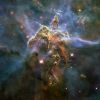 +1 +1
+1 +1These Hubble Space Telescope Photos Will Absolutely Boggle Your Mind
Taking photos of celestial bodies is no small feat. Well, taking good photos of celestial bodies, anyway... But NASA sure has perfected that art. Then again, they have the best tools in the business, including the aging, but still pretty darn good Hubble Space Telescope.
-
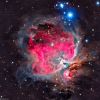 +17 +1
+17 +1Orion Nebula M42
by Dimitri Goderdzishvili
-
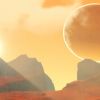 +15 +1
+15 +1Comparing the stunning space vistas of Elite: Dangerous, No Man's Sky and Space Engine to NASA images
He has seen things you wouldn't believe. Attack ships on fire off the shoulder of Orion. C-beams glittering in the dark near the Tannhäuser gate. Roy Batty's dying monologue is a key scene of Ridley Scott's Blade Runner, its pathos buttressed by a sense of wonder in the face of things no ordinary human being will ever see.
-
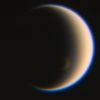 +14 +1
+14 +1Cassini turns towards its death plunge
The international Cassini spacecraft at Saturn has executed the course correction that will send it to destruction at the end of the week. The probe flew within 120,000km of the giant moon Titan on Monday - an encounter that bent its trajectory just enough to put it on a collision path with the ringed planet. Nothing can now stop the death plunge in Saturn's atmosphere on Friday.
-
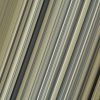 +32 +1
+32 +1Cassini Dropped Its Most Mind-Blowing Look At Saturn's Rings Yet
Though Cassini only has a few days left to study Saturn before it dies, it’s seriously making them count. Today, NASA released what it says are “the highest-resolution color images of any part of Saturn’s rings.” In true Cassini fashion, they’re absolutely mesmerizing.
-
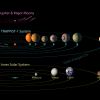 +14 +1
+14 +1TRAPPIST-1 Comparison to Solar System and Jovian Moons
All seven planets discovered in orbit around the red dwarf star TRAPPIST-1 could easily fit inside the orbit of Mercury, the innermost planet of our solar system. In fact, they would have room to spare. TRAPPIST-1 also is only a fraction of the size of our sun; it isn't much larger than Jupiter. So the TRAPPIST-1 system's proportions look more like Jupiter and its moons than those of our solar system. The seven planets of TRAPPIST-1 are all Earth-sized and...
-
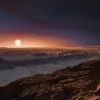 +38 +1
+38 +1Pictures of the Year: Space | Pictures
A view of the surface of the planet Proxima b orbiting the red dwarf star Proxima Centauri, the closest star to our Solar System, in an artist's impression.
-
 +20 +1
+20 +1The Orion Nebula (M42)
-
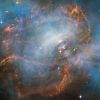 +32 +1
+32 +1NASA’s Hubble Captures the Beating Heart of the Crab Nebula
Peering deep into the core of the Crab Nebula, this close-up image reveals the beating heart of one of the most historic and intensively studied remnants of a supernova, an exploding star. (July 7, 2016)
-
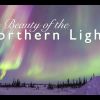 +30 +1
+30 +1The Beauty of the Northern Lights
5-minute music video featuring the Northern Lights – the aurora borealis – captured in still images, panoramas, all-sky images, time-lapse videos, and ... in real-time videos! All are from early February and early March of 2016.
-
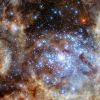 +22 +2
+22 +2Tarantula Nebula: Hubble spots nine 'monster' stars with masses 100 times that of the Sun
The Hubble Space Telescope has identified nine monster stars in outer space, all with a mass of over 100 times that of the Sun. The stars are part of the cluster R136, and have become the largest group of massive stars ever found. The star cluster is located 170,000 light years from Earth, and the findings will help astronomers learn about the origin of giant stars. The report was published in the Monthly Notices Of The Royal Astronomical Society.
-
 +30 +4
+30 +4See a Stunning New View of the Milky Way
Astronomers stitched together more than 700 maps to create the most detailed image ever of our galaxy from the Southern Hemisphere. [Big]
-
 +24 +3
+24 +3A Guide to the Full Moons of 2016
Everything you need to know about the full moons of 2016.
-
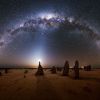 +33 +3
+33 +3Milky Way Over the Pinnacles in Australia
In the foreground of the featured image are the Pinnacles, unusual rock spires in Nambung National Park in Western Australia. Made of ancient sea shells (limestone), how these human-sized picturesque spires formed remains unknown. In the background, just past the end of the central Pinnacle, is a bright crescent Moon.
-
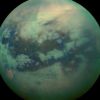 +26 +2
+26 +2Saturn's Moon Titan Glows Gorgeous Green in New Photo
Saturn's largest moon Titan glows a gorgeous green through the haze in a new composite photo released by NASA. The infrared view was captured when the Cassini probe flew by the moon at a distance of 6,200 miles last month. The space probe has had closer encounters with Titan, but from this distance was able to get a wider view of the mysterious world, capturing surface features, including dunes and craters.
-
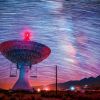 +39 +4
+39 +4Satellite Dishes Dance with the Stars in Ethereal Time-Lapse Film
In this gorgeous short film, satellite dish arrays from around North America join the sky in a celestial waltz.
-
 +28 +1
+28 +1Milky Way Photo with 46 Billion Pixels
It's the largest astronomical image of all time, used by astronomers in the search for distant exoplanets and multiple star systems.
-
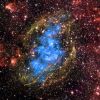 +26 +1
+26 +1Week’s Best Space Pictures: Curiosity Snaps a Selfie
Feed your need for heavenly views of the universe with our pick of the most awe-inspiring space pictures. This week, we get a glimpse of fall colors from space, see the remains of a supernova ballooning into a cloud of space stuff, and get a good-morning greeting from an astronaut in space.
Submit a link
Start a discussion




















